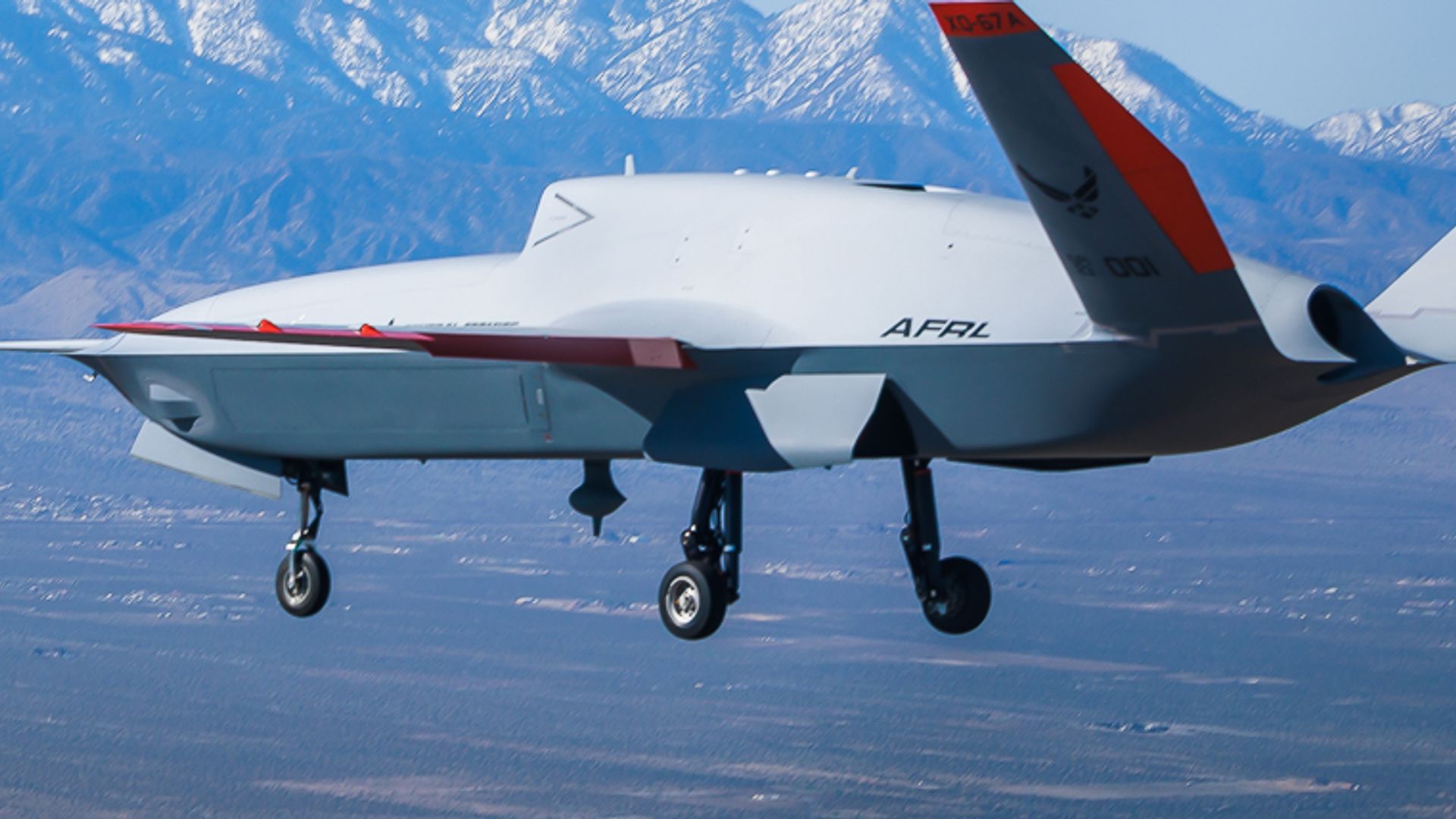
[RYAN ROBERTSON]
THE FUTURE OF AUTONOMOUS FLIGHT MAY HAVE JUST HIT THE SKIES FOR THE FIRST TIME.
THIS IS THE XQ-67A…AN AUTONOMOUS JET BUILT BY GENERAL ATOMICS AERONAUTICAL SYSTEMS AND THE AIR FORCE RESEARCH LAB.
[JAMES BIERYLA]
REALLY, IT IS THE NEXT PHASE OF THESE UNCREWED AIR VEHICLES THAT WE ARE HELPING TO DEVELOP, AND THE OPPORTUNITIES FOR THOSE ARE REALLY AMAZING WHEN YOU THINK ABOUT IT.
[RYAN ROBERTSON]
THE “NEXT PHASE” THE XQ-67A STANDS ON THE SHOULDERS OF THE XQ-58 VALKYRIE–WHICH THE AFRL ALSO WORKED ON.
THE XQ-67A IS CALLED AN OFF-BOARD SENSING STATION…AND IS DESIGNED TO AUGMENT THE CAPABILITIES OF ITS HUMAN WINGMEN THROUGH ANY NUMBER OF ACTIVITIES LIKE SCOUTING AHEAD FOR TARGETS OR WORKING TO JAM ENEMY RADAR AND COMMUNICATIONS. THE HELP IS SORELY NEEDED–BECAUSE IN A 21ST CENTURY BATTLESPACE–PILOTS HAVE A LOT TO KEEP THEIR EYES ON.
[JAMES BIERYLA]
THE WAY THAT WE PREPARED FOR COMBAT AND FOUGHT WARS IN THE PAST IS NOT THE WAY IT’S GOING TO BE IN THE FUTURE.
[RYAN ROBERTSON]
THE AIR FORCE AND NAVY ARE TRYING TO FIELD THOUSANDS OF LOW-COST AUTONOMOUS AIRCRAFT LIKE THE XQ-67 IN THE NEXT FEW YEARS…BUT THEY NEED TO BE CHEAP ENOUGH TO LOSE IF THE MISSION REQUIRES IT.
SO, IN ADDITION TO AUTONOMOUS FLIGHT…THE XQ-67 IS BEING USED AS A PLATFORM TO TEST HOW FEASIBLE IT WOULD BE TO PRODUCE THESE TYPES OF AIRCRAFT IN MASS.







